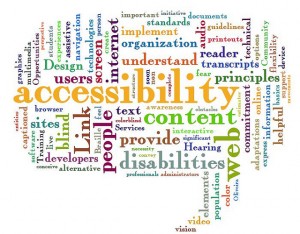During my teacher training I was exposed to many social media “horror stories” including one where vacation photos of a teacher holding alcohol and another of her sipping where the cause of a forced resignation (Daily Mail Reporter, 2011). In fact, I vividly remember an assignment where my classmates and I were to search each other’s public Facebook pages and report to each other what we could see.
Before taking this course I was aware of my digital footprint because I had tried to lock it down – ostrich behaviour (Hengstler, 2011). During my last placement term of teacher training, students had found the Facebook page of someone with my name, who wasn’t me, and I had been put in an awkward position. This issue was eventually resolved; but provides a clear example of “no presence” online not being an option for teachers.
Hengstler (2012) talks about 3 types of digital footprints – passive, active and second-hand. I think the most important type of digital footprint for teachers is the second-hand digital footprint where others can curate your presence, with or without your knowledge. The best way to manage your digital footprint is actively, so the presence you have online is one of your own design – and one you can easily direct others to explore if there are questions about it.
I have taken more steps toward actively managing my digital presence in the last few years– including creating a professional account on Twitter and being more active on work and personal blogs. I am not sure I am an Eagle just yet, but I do feel I am at least an Ostrich that has taken their head out the sand.
References
Daily Mail Reporter. (2011, February 7). Teacher sacked for posting picture of herself holding glass of wine and mug of beer on Facebook. The Daily Mail Online. Retrieved from http://www.dailymail.co.uk/news/article-1354515/Teacher-sacked-posting-picture-holding-glass-wine-mug-beer-Facebook.html
Hengstler, J. (2011). Managing your digital footprint: Ostriches v. Eagles. In S. Hirtz & K. Kelly (Eds.), Education for a Digital World 2.0 (2nd ed.) (Vol. 1, Part One: Emerging technologies and practices). Open School/Crown Publications: Queen’s Printer for British Columbia, Canada. Retreived from http://www.viu.ca/education/faculty_publications/hengstler/EducationforDigitalWorld2.0_1_jh89.pdf
Hengstler, J. (April 2012). “Digital professionalism and digital footprints”. Document prepared for training session with Vancouver Island University’s Administrative Assistants, April 2012.Retrieved from https://d2l.viu.ca/content/enforced/56545-EDUC_OLTD506_W70_F2014/foundations_boundaries/Social%20Media%20Digital%20Footprints%202013_v3.pdf?_&d2lSessionVal=C1D6uwH0jYfN3u2OJmmAp9NBQ&ou=56545

